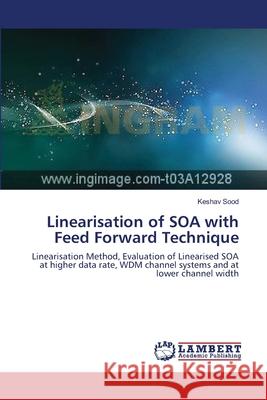Linearisation of SOA with Feed Forward Technique » książka
Linearisation of SOA with Feed Forward Technique
ISBN-13: 9783659388415 / Angielski / Miękka / 2013 / 68 str.
Optical links are widely preferred nowadays because of their high bandwidth and high speed which make them attractive and suitable for many communication applications. The three major problems encountered in optical communication are losses (signal attenuation), dispersion (pulse broadening) and non linearity (harmonic distortion, intermodulation distortion etc.). The losses and dispersion can be effectively compensated by using appropriate amplifier and dispersion compensated fiber (DCF) respectively. However the use of amplifier itself produces non linearity, so it becomes a serious necessity to adopt measures to reduce the effect of non linearities. Employments of various linearization techniques to achieve significant reduction in nonlinearities have been considered by ongoing research efforts. Keeping in view this stringent need, in this thesis effort the feed forward linearization technique using SOA in particular is assessed and evaluated. The linearized link model with SOA has been evaluated for achieving increased transmission distance, higher data rates and larger number of channels; by varying appropriate system parameters.
Optical links are widely preferred nowadays because of their high bandwidth and high speed which make them attractive and suitable for many communication applications. The three major problems encountered in optical communication are losses (signal attenuation), dispersion (pulse broadening) and non linearity (harmonic distortion, intermodulation distortion etc.). The losses and dispersion can be effectively compensated by using appropriate amplifier and dispersion compensated fiber (DCF) respectively. However the use of amplifier itself produces non linearity, so it becomes a serious necessity to adopt measures to reduce the effect of non linearities. Employments of various linearization techniques to achieve significant reduction in nonlinearities have been considered by ongoing research efforts. Keeping in view this stringent need, in this thesis effort the feed forward linearization technique using SOA in particular is assessed and evaluated. The linearized link model with SOA has been evaluated for achieving increased transmission distance, higher data rates and larger number of channels; by varying appropriate system parameters.











